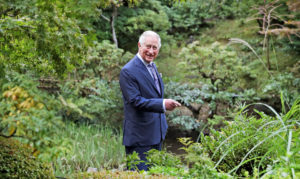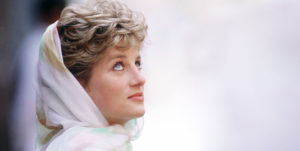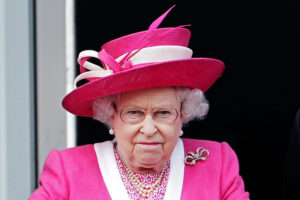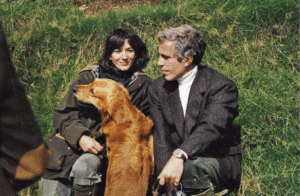Twenty five years ago, Charles Philip Arthur George Windsor threw a party for 80 friends at Highgrove, his Gloucestershire kingdom within the kingdom. Tony Blair had declared weeks before that the Britain of the elite was over. Princess Diana, along with William and Harry, was a guest of Dodi Al-Fayed in St Tropez. Old structures tottered.
Charles’s guest of honour, on her birthday, was his long-suffering mistress. She was then the crossroads where all national snobberies meet: a tabloid had recently printed a picture of her next to a horse, then asked: “Which one would you rather go to bed with?” The party was widely interpreted as an insult, but it was more of an apology to Camilla Parker Bowles. No other Royal attended.
A quarter of a century on and Camilla’s 75th birthday presents are the guest editorship of Country Life magazine, and a television special on ITV. The documentary reveals that she has shared a fag with Jeremy Clarkson, and her approach to life is to “just get on with it”. Through the cameras, and on the pages, she appears unaffected. Is this Camilla an actual person? Or a spit-and-polish construct designed behind-the-scenes to fill a vacancy when the Queen dies?
Suspicions about her have lasted. Only 13% of the public believe that Camilla should be Queen. (It will happen, regardless.) In the run up to her birthday next week, newspapers wonder how Camilla has “won everyone round”, but she remains, in tabloidese, a “controversial figure”. The public are persistent Diana partisans. They do not get on with it. Like some of our politicians, for them it is eternally 1997, and Diana’s car will always be heading towards a smash. Against this sentimental legend, Camilla has nothing to offer but her Jack Russell terriers, being “nice” to photographers, and that time she laughed at some Inuit throat singers. She becomes a mirror of her mother-in-law — a quiet enigma.
Still, the essentials are not at all mysterious. War hero father becomes a wine merchant, and a mildly amusing writer. Mother: knitting, wealthy, and deb of the year 1939. School friends remember Camilla’s ability to stand in the cold for longer than normal. (This will prove useful later in her life.) There is nothing to suggest the formation of an unusual character.
She passes fewer O-levels than Jeremy Corbyn. (Similarly, Diana Spencer’s most notable academic achievement is to win a school prize for best-tended guinea pig.) She likes hunting, and blowing cones of smoke between tokes of her Marlboros. Camilla Shand is of her class but slightly before her times. She is tomboyish and funny, consequently perfect for the men in the Polo scene, with their frighteningly monosexual educations.
Camilla was brought up to be a rose-pruning, novel-reading, fox-hunting county lady. Today Camilla, if the pages of Country Life are anything to go by, is a rose-pruning, novel-reading, fox-hunting county lady. What Virginia Woolf called “tweed-wearing, sterling dull… with grim good sense”. Dog hairs deeply woven into clothes, the first G&T a little early; silly nicknames and beef on Sundays. Solid lives that have scarcely changed since the days of Pitt the Younger. In Country Life and Camilla’s vanishing England, it’s possible — even encouraged — to forget the passage of entire centuries.
The first marriage is described as a “major social event” by all the future biographies — because Princess Anne is there. Camilla Shand becomes a Parker Bowles. Her fast London days slow to a manor in Wiltshire, where she gardens and hunts. Her husband, known as Andrew “Poker Bowles”, is one of those libertine Catholics. He behaves badly, confesses, then throws his chips on the table again. He is prouder to be the inspiration for a character in a Jilly Cooper novel than of his marriage.
This might have gone on until the grave. Camilla might have planted peonies in her garden for decades, might never have had to give up her pack a day, might have read the Sunday Telegraph next to Andrew at breakfast last weekend. But for Charles.
When they first met, he was not exactly Bond. In front of a white pavilion, amid billowing elms, across from a vividly green grass pitch. It was a civilised, convivial, and slightly alarming scene — polo at Smith’s Lawn. Camilla in 1972 was at the height of her sensuousness. Young Charles was the most magnificent job-seeker in a land filling up with them. He slept with his teddy bear. He believed the way to a woman’s heart was to play practical jokes on them — his favoured aphrodisiacs were exploding envelopes packed with rubber bands. Suavity was distant.
The relationship began. From the start, disdain wrapped itself around Camilla like a bag over a head. The Queen praised her for her lack of guile and ambition, without realising she was praising Camilla for what she most admired about herself. The sinister Lord Mountbatten (Charles’ male mentors are always sinister) called her a “good learning experience”. At this height, in this society, people and ponies are easily confused. Senior figures in Charles’s life believed, archaically, that she was not “pure” enough for him. He did nothing to challenge them.
Though he knew as early as 1972 that he loved Camilla, Charles married Diana. A binary emerged; one day the country would be invited to take sides. Where Camilla was unoriginal and unimaginative, Diana was theatrical and neurotic. Camilla was stage scenery, Diana was Othello. Camilla didn’t feel things; Diana would weep at the sight of a bracelet. Charles literally had one job: marry well. He blew it. “Is it possible to love two women at the same time,” he asked, the night before his blockbuster marriage. The answer, unhappily enough, will forever be: yes and no. By the late Eighties, pictures of the prince show smoke signals wafting from his eyes. His hours of happiness seemed burned through.
Raised by a coterie of what Prince Philip delicately called “nannies, nurses, and poofs”, the Prince of Wales was not prepared for a constitutional position that demanded epic stoicism. He was dimly aware of this mismatch between role and temperament. Battered by alternating gusts of public hatred and public reverence, he forgot himself. Once asked by a boy in Malaysia, “Who are you?” He replied: “I wish I knew”.
His solution was Camilla. When the public discovered this, and his first marriage ended, Charles’s mistress became as fascinating to the world as a goat with four heads. Typically, the world then asked the wrong questions about the relationship. Philip had told Diana that he could not imagine anyone in “their right mind” leaving her for Camilla.
The Duke’s words echoed throughout the Nineties, and they still echo today. Camilla was called an old boiler and a trout, fat and gaunt, a witch and a vampire. Mohammed Al-Fayed nastily said she looked “like something from a Dracula film”. Against this, the press compared Diana’s generational beauty. Camilla became the most hated woman in England. Like Anne Boleyn, she was considered a schemer, an opportunist, and a sexual predator. If there were still chopping blocks, Camilla would have graced them as Boleyn did. Instead she faced the stocks. In an eccentric (and rather late) attempt to regulate the nation’s extinct moral verities, women pelted her with rolls in a supermarket car park. Camilla went into hiding and did what Elizabeth II would have done. She said nothing. Charles’s approval rating was lower than Prince Andrew’s is today.
The supposed mystery of Charles and Camilla invited speculation. What exactly did Charles see in her, demanded the British public. A backwards question. The better one was: what did Camilla see in Charles? He might have been heir to the throne, but the throne wasn’t what it had been a century before. That is the real enigma. The answer is the one word the British flee from fastest. Love.
Admittedly, it was not the most straightforward kind. Camilla’s love for him has been compared to a mother’s — a love smothered by fear. Nicky Haslam told the New Yorker: “It’s like a rope attached to her. There’s something very, very strong from her to him — almost umbilical.” When Diana left Highgrove, Charles purged his estate of all traces of his wife. Gone were the pink sofas and soft toys in favour of red curtains and tapestry covers. The interior designer Dudley Poplak saw the new rooms, and said Charles was withdrawing into the womb. He was going back to Camilla.
Charles is technically related to a divinity. He is said to be descended, via Alfred the Great, from the Saxon god Woden. But being Prince of Wales invites stasis, and semi-permanent adolescence. The woman he ended up with was always going to be a mother, not a whirlwind. This is what the public has never understood, and why they are wrong about Camilla becoming Queen consort. The closest replacement available for Elizabeth II — sane, steady, consistent — is Camilla. It might be a bit unconventional on Charles’ part. But it is good for the country.
Contemplate a day in her life. Hours of public ceremonial. A voice in your ear telling you who you are meeting and what to say. Half a dozen fixed smiles in every freshly painted room. Speeches and remarks heavily rehearsed. You can’t even smoke anymore. Next Tuesday you will open a new hospital ward in Northampton. Prince Harry calls your husband a “tit” in a podcast interview. This trends on Twitter. He is suing another newspaper. It rains.
But like her mother-in-law she goes on. Old structures are resilient. It is hard to conceive that anyone as publicly wounded as Camilla could also retain a sense of humour. Even in the artificial world of guest editorships and documentaries, though, you can see it. She is the only Royal who doesn’t seem fantastically annoyed by The Crown — she’s had so much worse.
Wrapped in royal tinsel, Camilla might be the last hard kernel of an Englishwoman left. History would have made most people in her position a fool, or sent them mad. Instead it has given her a gift, albeit a rather tainted one: being our Queen. It’s the least she deserves.
Disclaimer
Some of the posts we share are controversial and we do not necessarily agree with them in the whole extend. Sometimes we agree with the content or part of it but we do not agree with the narration or language. Nevertheless we find them somehow interesting, valuable and/or informative or we share them, because we strongly believe in freedom of speech, free press and journalism. We strongly encourage you to have a critical approach to all the content, do your own research and analysis to build your own opinion.
We would be glad to have your feedback.
Source: UnHerd Read the original article here: https://unherd.com/





